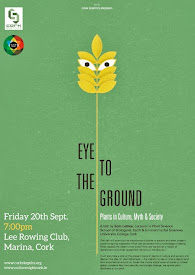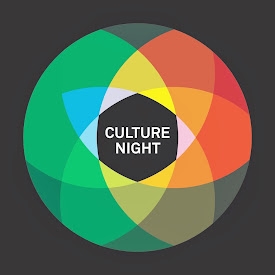Let me tell ya 'bout the cherry trees
Let me tell ya ‘bout the cherry trees
Every April in our town
They put on the most outrageous clothes
And they sing and they dance around
Hardly anybody sings or dances
Hardly anybody dances or sings
In this town that I call my own
You have to hand it to the Cherry trees
And they seem to be saying, to me anyway
“You know we’ve traveled all around the sun
You know it’s taken us one whole year
Well done everyone, well done”
On behalf of me and the Cherry trees,
WELL DONE!
Well done everyone!
John Spillane ~ The Dance of the Cherry Trees
Every April in our town
They put on the most outrageous clothes
And they sing and they dance around
Hardly anybody sings or dances
Hardly anybody dances or sings
In this town that I call my own
You have to hand it to the Cherry trees
And they seem to be saying, to me anyway
“You know we’ve traveled all around the sun
You know it’s taken us one whole year
Well done everyone, well done”
On behalf of me and the Cherry trees,
WELL DONE!
Well done everyone!
John Spillane ~ The Dance of the Cherry Trees
The arrival of the cherry blossoms this year is surely a relief to us all. After going through the worst winter in (my) living memory and with all the doom and gloom around the place, it's a welcome sight for sore eyes.
A little later than usual (but not by much), the blossoms are being to burst forth in all their magnificent, subtle pinkness.
Cherry trees (Prunus spp.)have been bred and cultivated in Japan for centuries, where the social phenomenon of "flower viewing" is still practiced with the cherry blossoms. The Cherry Blossom festivals ("Hanami in Japanese) are a unique part of japanese life - it has been celebrated in Kyoto for the past 1200 years.
Each year, thousands gather to watch the blossoming of the Japanese mountain cherry (Prunus jamasakura) which is at its peak for just 2-4 days every year. Because of the cultural, economic and scientific interest in this festival, the flowering times each year have been carefully recorded and can now aid scientists in the study of phenology - the study of the timing of plant and animal life cycle events.
This unique data, which in Japan can stretch back over 730 years allows the scientists to understand the effect of climate change on flowering time.
A study of the data shows that there is a six-week range in flowering dates throughout the centuries in Kyoto - from late March to early May. The evidence suggests that some periods of time had earlier or later average flowering times. For example, the 9th and 10th centuries seem to be a time when flowering was particularly early and the late 17th century, amongst other times, showed especially late flowering dates.
Importantly, since 1830 the cherries have been flowering progressively earlier and by the 1980s and early 1990s, average flowering times had become earlier than at any other time previously recorded.
In a smaller study, the cherry blossoms at Wuhan University, China were studied between 1947 and 2008. (Incidentally, there are not many 61-year experimental studies that can be described as small, but in light of the Kyoto study, this is). The Chinese study demonstrated that for every decade that passed, the flowering date got earlier by about 2 days.
"flowering time is useful as a sort of historical thermometer"Plants naturally use temperature as a signal for flowering. It makes sense from the plants point of view not to flower too early (when frost might damage the new growth) or too late (when they may loose time for photosynthesis, growth, pollination, fruit development and so on). From that point of view, flowering time is useful as a sort of historical thermometer to study climate change. However, as the plant is now experiencing temperatures it has never had to deal with before, scientists find it difficult to predict how it will adapt and react.
Irish scientists have a long interest in phenology. When the International Phenological Gardens scheme was founded in 1957 in Germany, four Irish gardens were chosen to participate. These were (and still are) the gardens located at Valentia Observatory in Kerry, at Johnstown Castle and JFK Arboretum in Wexford and at the National Botanical Gardens in Dublin. Glenveagh National Park and the Armagh Observatory have subsequently been added to the scheme.
These locations were planted with a range of trees cloned from trees in Germany to ensure that the same types of tree was being used throughout Europe. The Irish Phenology Network now consists of 28 sites, some acting as international sites also. The Irish network includes gardens at Millstreet Country park, Blarney Castle and Birr Castle.
Wherever you are this Spring, enjoy the Cherry Blossoms; after the long hard winter we've had, we deserve them.
Trinity College, Dublin will host an international conference on phenology on June 14-17 this year.
Reference:
Primack et al., 2009. The impact of climate change on cherry trees and other species in Japan. Biological Conservation 142: 1943-1949.
Zhenghong et al., 2008. Change in flowering dates of Japanese Cherry Blossoms on campus of Wuhan University and its relationship with variability of winter temperature. Acta Ecologica Sinica 28: 5209-5217.

























0 comments:
Post a Comment